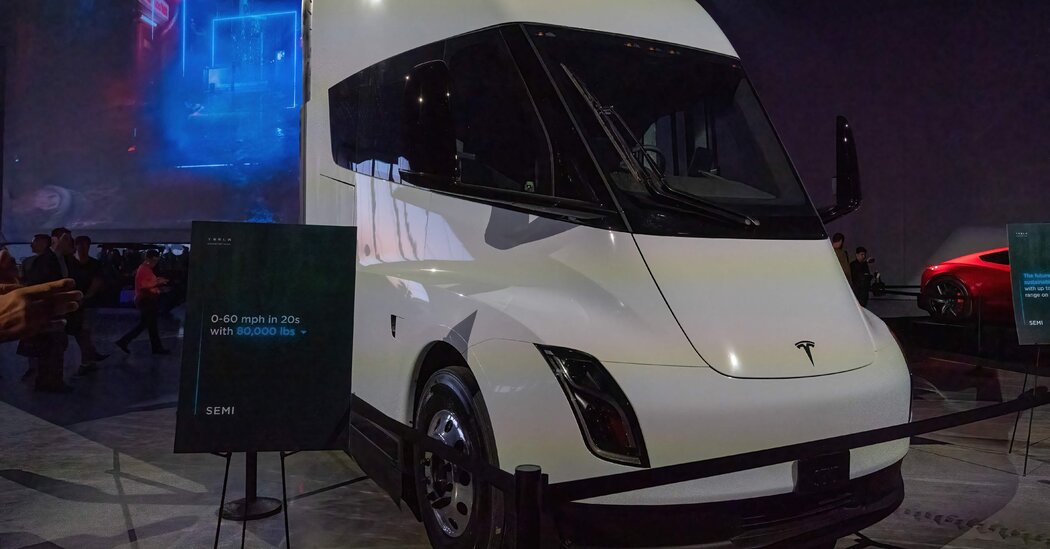GM’s Electric Vehicles Will Use Tesla’s Charging Network
General Motors said on Thursday that it would adopt Tesla technology to charge its electric vehicles, including selling models that use the plugs pioneered by Tesla.
The announcement, two weeks after Ford struck a comparable agreement, is likely to make Tesla’s plugs the industry standard and squeeze companies that are racing to build similar networks as sales of electric vehicles surge. The agreements mean that owners of Ford and G.M. vehicles will be able to use Tesla chargers, which are often the only ones available in many places and have a reputation for reliability.
“This really almost doubles access to chargers” for G.M. customers, Mary T. Barra, the automaker’s chief executive, said during a streamed Twitter conversation with Elon Musk, the chief executive of Tesla and owner of Twitter.
Mr. Musk said the deal “is going to be a fundamentally great thing for the advancement of E.V. adoption.”
But it may raise concerns that Tesla, which already dominates electric vehicle sales, could overwhelm competitors in the fast-growing charging business.
While G.M. gets access to more chargers, Tesla will make money from selling energy to owners of models made by other automakers. Tesla has been charging owners of those other cars higher rates than owners of its own cars. The electric car company also needs to open up its network to qualify for some of the $7.5 billion that the federal government is spending to speed up the construction of charging stations.
By adopting Tesla’s charging standard, Ford and G.M. also risk becoming dependent on their most formidable competitor. Neither of the Michigan-based automakers sells anywhere near as many electric cars as Tesla, and neither operates a charging network.
The agreement also has risks for Tesla. The popularity of its cars has created congestion at the company’s charging stations in some cities and along some highways. Tesla owners may become irritated that they will now have to queue with cars made by Ford and G.M.
“I don’t think Tesla owners will be pleased to watch a Ford Mustang Mach-E getting charged, while they wait in line,” said Ben Rose, president of Battle Road Research, who follows the auto industry.
The battle between Tesla’s charging plugs and the ones currently used by Ford, G.M. and other automakers recalls the competition between Betamax and VHS video cassettes in the 1980s. VHS ultimately won the battle.
At one level, the competition between the standards is a wonky technical issue with each side claiming its plug is the better choice. But it could have long-lasting implications for the millions of people who are expected to switch to electric vehicles in the coming years.
Tesla sells cars with a plug known as the North American Charging Standard. Ford, G.M. and most other carmakers have sold cars with plugs using the Combined Charging System plug. The two are not compatible.
Fast chargers offered by companies like EVgo typically have both plugs and can charge Teslas as well as cars from manufacturers that use C.C.S., including Mercedes-Benz, Volkswagen and Volvo. For most of its roughly 10-year history, Tesla’s network — which operates more than half of the nearly 30,000 fast chargers in the country — was closed to cars from other manufacturers, but the company recently began allowing other cars to use some of its chargers.
Reaction from competitors was restrained on Thursday. “We support all moves to increase E.V. adoption,” Brendan Jones, the chief executive of Blink Charging, said in an email. He added, “We are monitoring the market closely and will adjust if we think necessary.”
Investors welcomed the deal. The share prices of Tesla and G.M. were up about 3 percent in extended trading on Thursday.
This year is shaping up to be critical to G.M.’s electric vehicle ambitions. The company is weeks away from offering a battery-powered version of its Chevrolet Silverado pickup truck. It also plans to introduce electric iterations of the Blazer and Equinox sport utility vehicles.
Ford is working to accelerate production of its electric F-150 Lightning at a factory in Dearborn, Mich.
Mr. Musk said during the conversation with Ms. Barra that Tesla would not use its control of the nation’s largest charging network to disadvantage competitors. But if Tesla’s standard becomes dominant, other operators will be reliant on a competitor for information they need to manufacture and install charging networks.
Jonathan Levy, the chief commercial officer of EVgo, said the company hoped that the North American standard “will be published in a way that suppliers across the industry will have access to deliver more charging options for E.V. drivers.”
Beginning in early 2024, owners of Ford and G.M. electric vehicles will be able to buy adapters to connect to Tesla fast chargers. In 2025, both companies plan to sell vehicles designed to use Tesla’s North American plug. Owners would need an adapter to connect to C.C.S. chargers.
By teaming with an archrival, Ford and G.M. have conceded that they need Tesla’s network to sell electric vehicles.
“Dependable, widespread public charging is a key driver to scaling the adoption of E.V.s,” Jim Farley, the chief executive of Ford, said in an email when the company announced its agreement with Tesla last month. “The Tesla Supercharger network has proven reliability and has already established charging corridors across the U.S. and Canada.”


